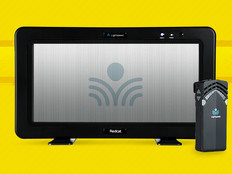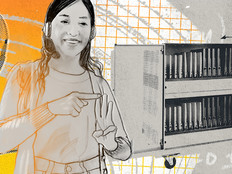Space on the Education Frontier
What does it mean to be well-educated in the 21st century? How does this shift the notion of teaching and learning? These are questions schools must explore as participatory media, emerging technologies, 21st-century skills and expanded notions of literacy fundamentally shift the educational landscape.
What does it mean to be well-educated in the 21st century? How does this shift the notion of teaching and learning? These are questions schools must explore as participatory media, emerging technologies, 21st-century skills and expanded notions of literacy fundamentally shift the educational landscape.
The answers make it clear that classrooms must become communities grounded in collaboration, creation, contribution, communication, connections, and formal and informal learning. This realization spawns the need for multidimensional learning spaces that are permeable, transparent and independent of time, space, place and size. While remaining committed to the physical space, the learning ecosystem must expand into the digital: creating a course learning space, student learning space and knowledge commons.
The course learning space ties directly to the teacher. Here, students have access to all classroom elements: content, documents, discussions and assignments. This space is not a storage center but an opportunity to rethink the delivery of content.
This reallocation of classroom time for facilitated inquiry, collaboration and creation calls for new pedagogical strategies rooted in constructivism and connectivism.
Beyond the Classroom
However, creating a course learning space alone is not enough. The very nature of the concept is teacher-centered – an idea that meets the industrial model of education, not one in which the students own, grow and lead their learning and drive content. If blogs, podcasts and media creation were tied to the course space, student-generated content would live and die with the course instead of remaining with each student, where it can live and breathe through reflection, growth and extension of ideas across the span of the academic career and beyond.
By creating a student learning space, the power of content creation returns to the student, creating learning that is fluid and organic. It is here that students become “prosumers” as they connect and learn locally through wikis, social bookmarking and social networking. It is here that students connect and contribute to distributed knowledge by way of their blogs. It is here that students broadcast their voice using various media, Web 2.0 and an ever-evolving repository of tools.
Even more important, the potential to scaffold skills and teach students about content distribution exists within this space: what is published, broadcast, created, distributed and mashed up. From this, students learn to be multidisciplinary scholars, networked thinkers and lifelong learners beyond the classroom. These creations are controlled by students as part of the greater knowledge network of their peers, global and local.
The flood of information that flows out of this structure requires the creation of a digital knowledge commons – an open, flexible area rooted in intellectual and networking activities shared across the entire community. The knowledge commons collapses the notion of isolated classrooms into a learning network where connecting and remixing defines a community of innovators, learners and sharers. Librarians are key players in this endeavor, helping to navigate and build information via networks, folksonomies (a system of classification) and distributed knowledge access.
In this day and age when content is available anytime, anywhere and to anyone, classrooms can no longer be tethered to the content-driven, physical spaces defined by 20th-century methodologies. Isn't it time we provide our students with meaningful, multidimensional learning spaces that define 21st-century education?
IT Investments on the Rise
IT spending estimates peg U.S. educational institutions at $56 billion by 2012, according to Compass Intelligence, an IT consultancy and market research firm. This year, education spending will likely exceed $47 billion, a 2.5 percent increase from 2008.
Most of the money is expected to go toward telecommunications, collaborative technologies and outsourced IT services. Another top expenditure is wireless technology: About 35 percent of all K–12 schools were using wireless by the end of 2008. The market for Internet and electronic learning tools is projected to grow to $12.9 billion by 2012, Compass Intelligence reports.






